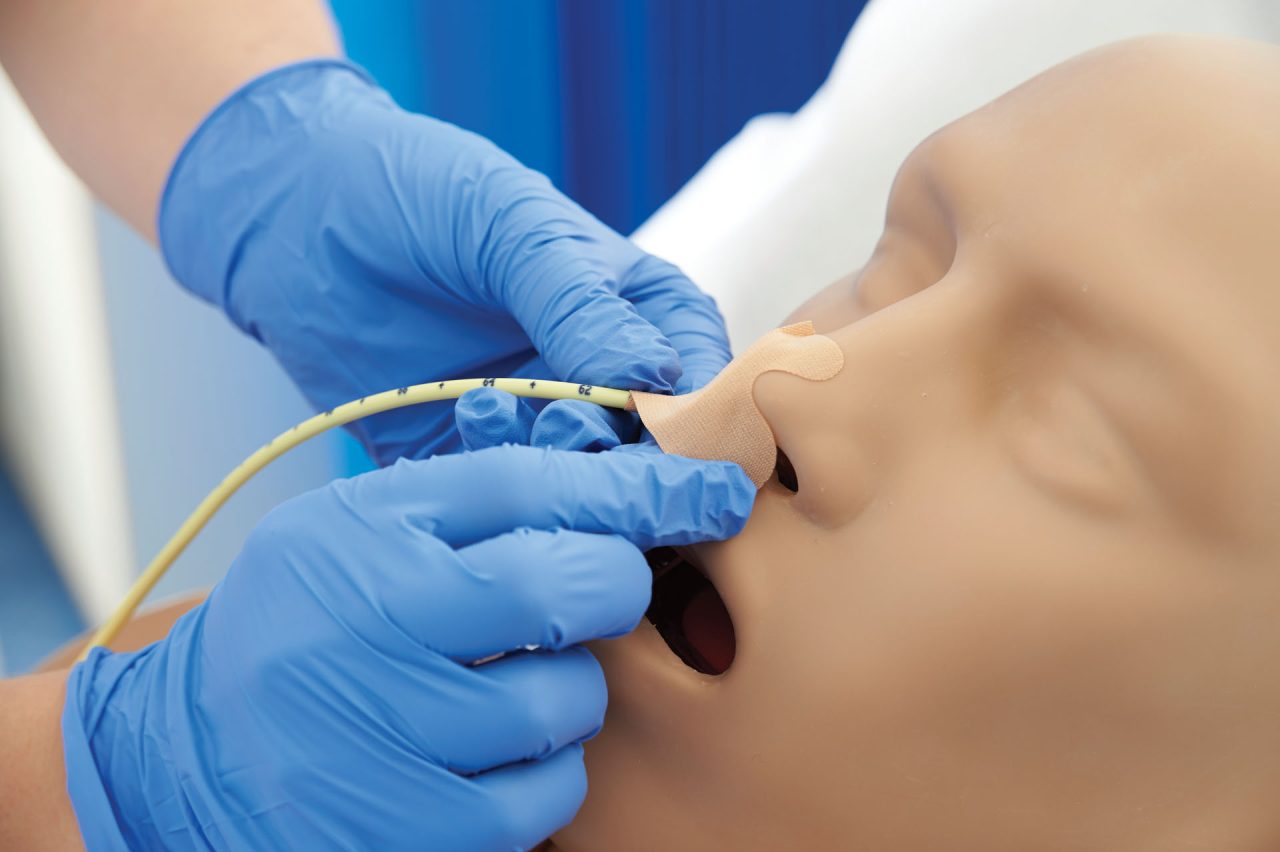
Clinical training techniques are constantly changing and evolving as medical knowledge advances. At Adam,Rouilly, we’ve been working with healthcare professionals, hospitals and universities for more than 100 years to ensure our simulators and teaching models are designed and updated to support those advances.
Many of our products have been developed in collaboration with clinical experts to facilitate realistic training in accordance with the latest safety and best practice guidelines.
One example of this is our CorMan® – Adult Nasogastric/Nasojejunal Feeding Trainer. The simulator was developed to enhance training and proficiency in nasogastric and nasojejunal feeding tube placement, as well as gastrostomy device management.
Its design supports training in accepted policies confirming NG tube placement which can ultimately help prevent avoidable deaths. This takes into account updates since 2005 which banned previously used methods such as the ‘whoosh’ and ‘bubble’ tests.
An issue of patient safety – only two methods acceptable for confirming NG tube placement

Nasogastric (NG) tube placement has been a much-discussed topic in the NHS over many years due to the serious risk to life caused by feeding through tubes that have been incorrectly placed into the lungs instead of the stomach.
Misplaced tubes were recognised as a patient safety issue by the National Patient Safety Agency (NPSA) in 2005 and have been the subject of an unprecedented number of alerts on a single topic since then. Further reports were issued by NHS Improvement (NHSI) in 2016, and by healthcare experts as part of the Nasogastric Tube Special Interest Group (NGSIG) of British Association for Parenteral and Enteral Nutrition (BAPEN) and the Health Services Safety Investigation Body HSSIB in 2020, due to ongoing errors.
The two acceptable methods confirming NG tube placement are:
- Testing stomach aspirate using CE marked and in-date pH strips
- Specific tube placement confirmation X-ray
Other previously used methods were deemed no longer safe and therefore banned. This included auscultation – listening to sounds from the body using a stethoscope – commonly referred to as the ‘whoosh test’ or the ‘bubble test’- under the ‘mistaken assumption’ that the external end of the tube produces bubbles if placed in the lungs.
Improving training to prevent ‘Never Events’
Feeding into the lung via a misplaced NG tube was classified as a ‘Never Event’ in 2009. However, despite the various safety alerts since 2005, concerns remained several years later, that while there was some success in replacing traditional but unsafe testing methods, too many errors, and avoidable deaths were still occurring.
Analysis of NHS Improvement data revealed approximately 85 Trusts reported Never Events due to misplaced NG tubes between 2015 and 2019. This was primarily attributed to organisations failing to implement the guidance issued in the Patient Safety Alerts since 2005.
The recommendations are for more rigorous training and guidance and the implementation of a uniform training programme.
The Adam,Rouilly AR90 CorMan® simulator – designed with best practice in mind
The AR90 CorMan® – Adult Nasogastric/Nasojejunal Feeding Trainer has been developed with clinical experts to be compatible with latest best practices for nasogastric feeding to ensure patient safety when used as part of a robust training programme.
The simulator has transparent internal anatomy to aid visual and procedural understanding of both correct tube placement into the stomach, and incorrect tube placement into the trachea and lungs. Learn more about the AR90 CorMan features here.
For more detailed information about the Adam,Rouilly range of Clinical Skills simulators, please contact our Sales team.